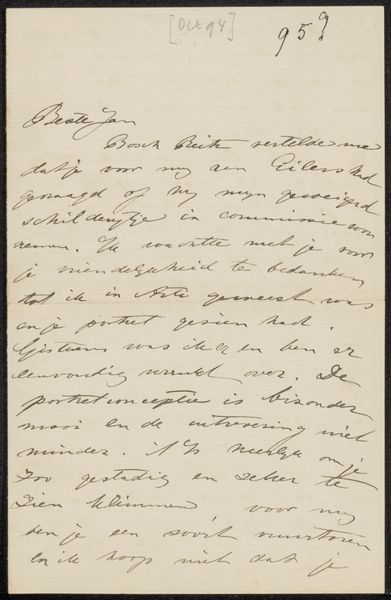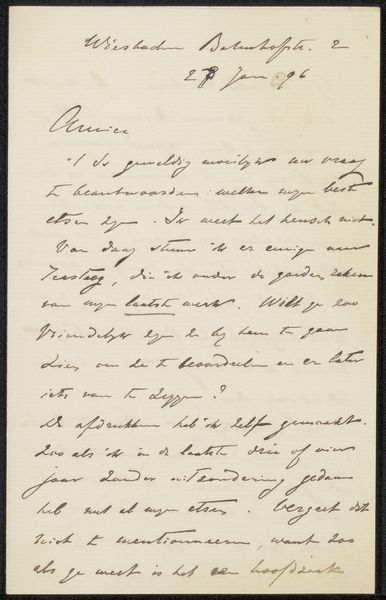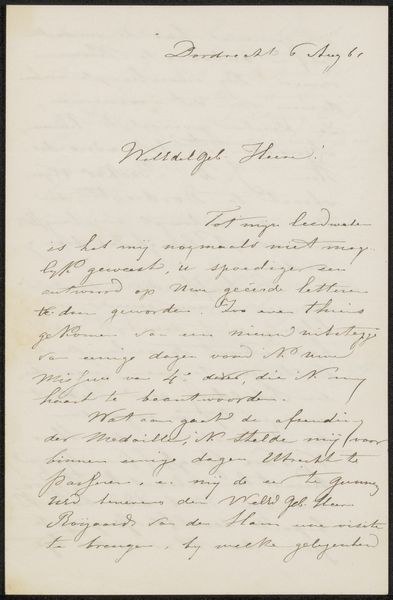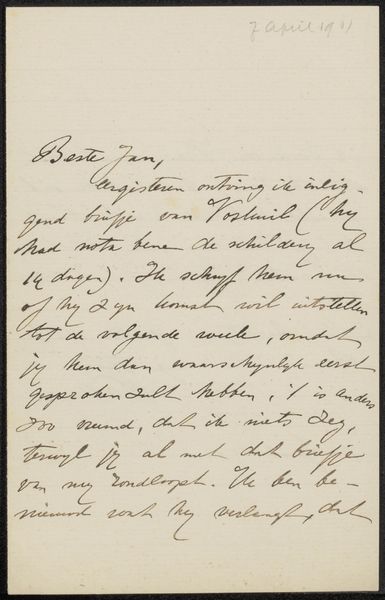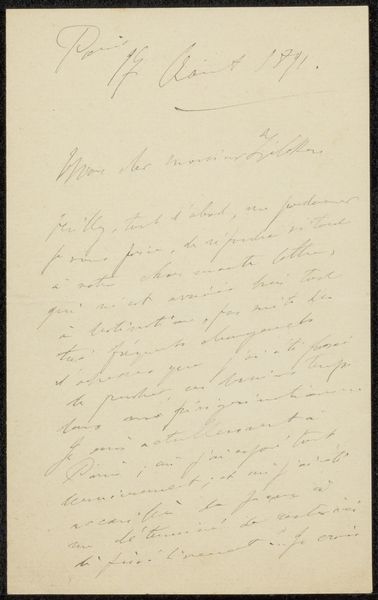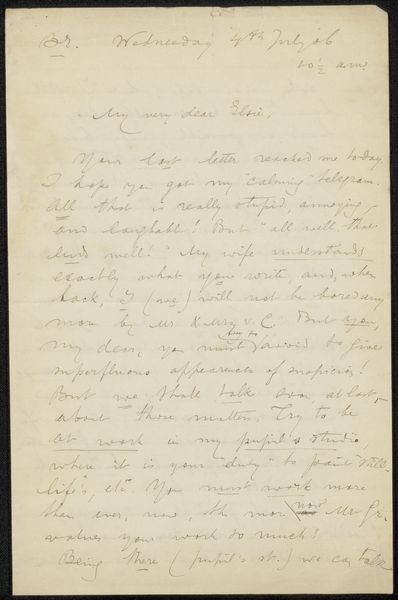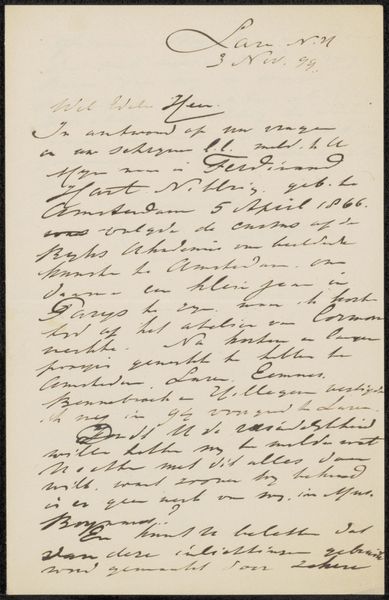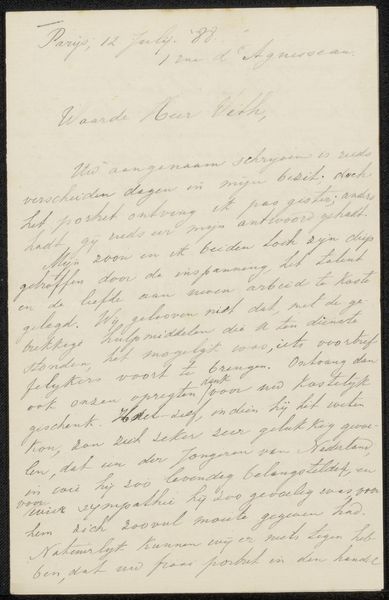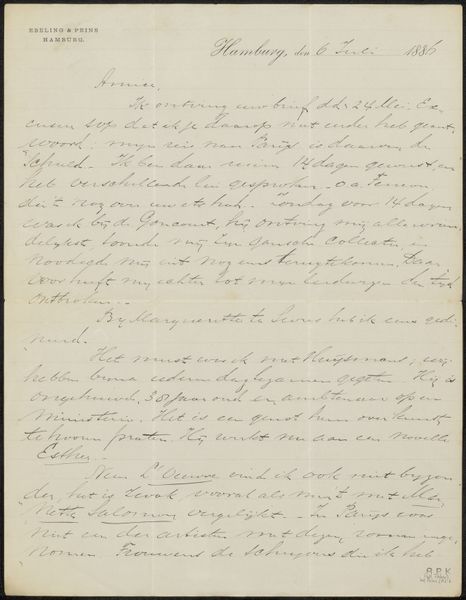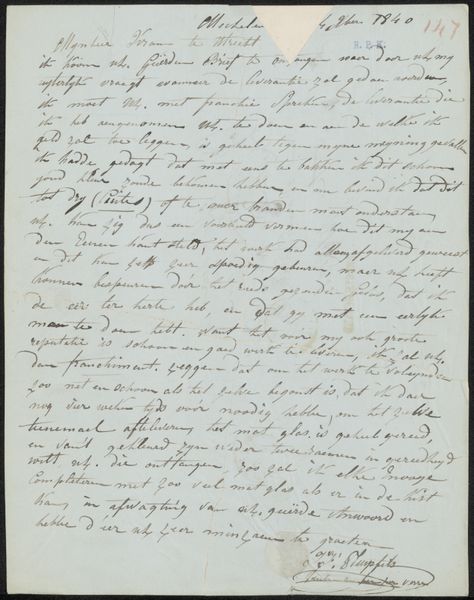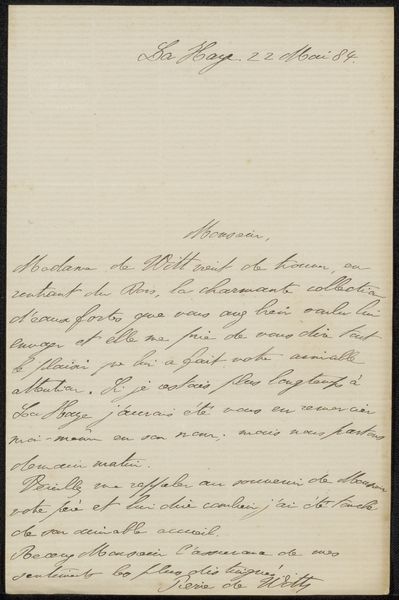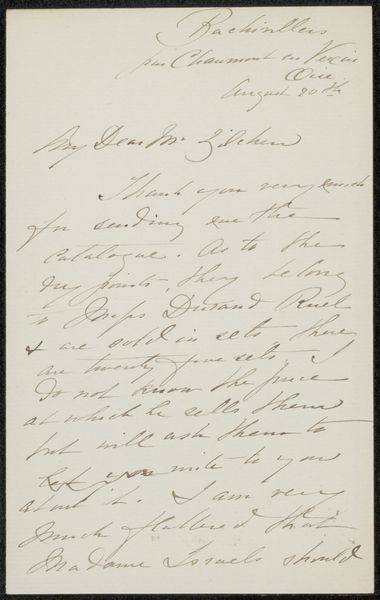
drawing, paper, ink
#
drawing
#
paper
#
ink
Copyright: Rijks Museum: Open Domain
Editor: Here we have "Brief aan Philip Zilcken," possibly from 1899, made with ink on paper, and it's currently held at the Rijksmuseum. What immediately strikes me is how intimate it feels – a peek into a personal correspondence from over a century ago. How do you interpret this kind of artwork within a broader cultural context? Curator: Well, looking at this, we have to consider the late 19th century and the burgeoning art world. This letter, penned by Edmond Picard, speaks volumes about the artistic networks and the transactional nature of art at the time. Note the discussion of paintings, framing, and artist supplies. Consider this within the context of the rise of the modern art market and how artists and patrons were navigating this evolving system. Does this shift your perception? Editor: Absolutely, knowing it's not just a casual letter but part of a dialogue concerning art pieces changes how I see it. I’m curious, does the content of the letter itself suggest anything about the social standing or relationship between Picard and Zilcken? Curator: The tone – “Cher Monsieur” – while polite, lacks extreme familiarity. This suggests a professional or, at most, a cordial relationship, rather than close friendship. It reveals aspects of their engagement as potentially that of a powerful broker, such as Picard, offering opportunities to a patron or collector, like Zilcken, to display those artists' paintings. Thinking about it this way, how might you now evaluate the piece’s accessibility and relevance to the public in its role within a museum today? Editor: That makes me think about how the museum's decision to exhibit it reframes it, too, transforming private communication into public record and making us consider things like patronage and the commercial side of art, maybe even challenging some romantic ideas about artistic creation. Curator: Precisely. So, while a seemingly simple letter, its significance lies in its ability to shed light on the intricate social and economic structures that underpinned the art world of its time, inviting a critical engagement with the museum's own role. Editor: It’s fascinating to see how much historical insight can be gleaned from something as unassuming as a letter. Thanks so much for sharing your perspective!
Comments
No comments
Be the first to comment and join the conversation on the ultimate creative platform.
